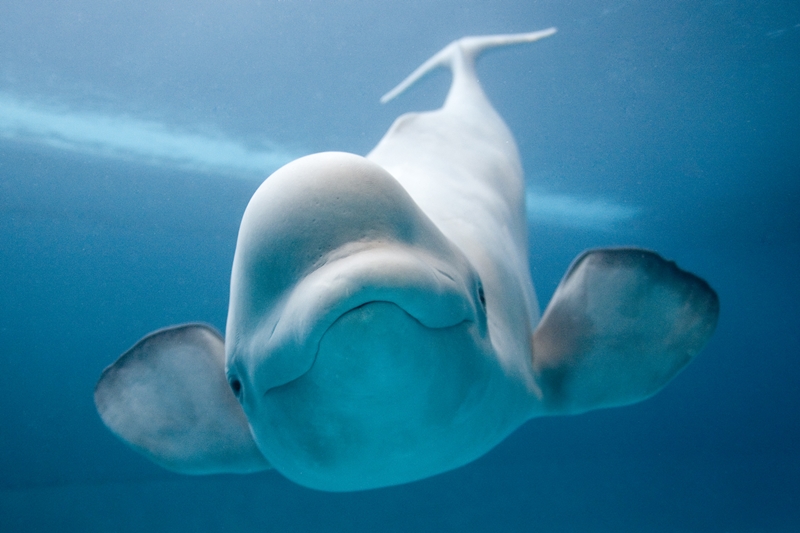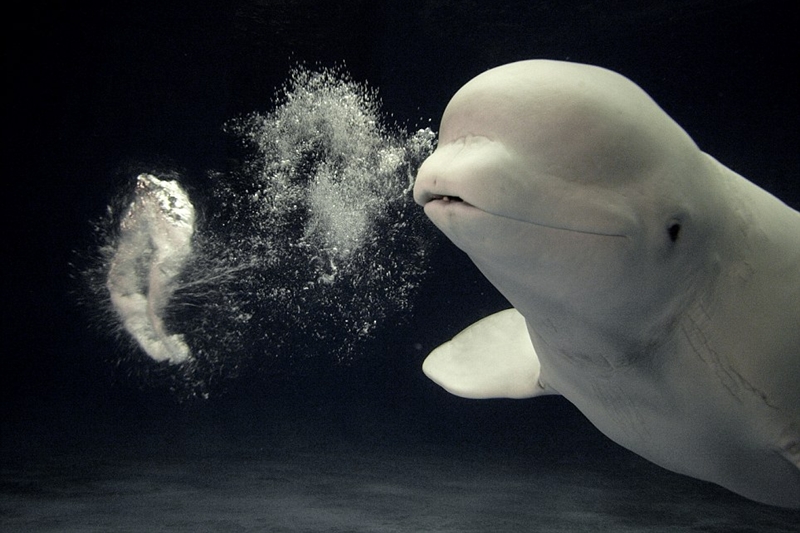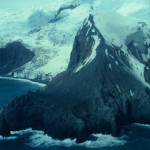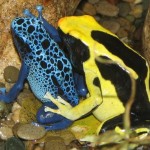Beluga Whales - Facts File
- Published by
- Posted on
- Leave your thoughts
-
When we hear the word whale a giant sized monstrous fish comes to our mind, but Beluga whales are just the opposite of it. The Beluga whales are the smallest species of whales and are easily identifiable due to their unique colors and distinctive features.
The calves of these whales are born with gray or brown color and when they grow old and mature sexually, the color turns white. This is one of the reasons why Beluga whales are also called white whales. The name Beluga is derived from Russian word, “beilo” meaning white. It is also known as “Canaries of the Sea” because of the loud sounds made by them. The other names used for it are white whale, white porpoise and the squid hound.

The beluga whales are considered to be the world’s cleverest sea creature and 100s of them are distributed in aquariums worldwide.
Let’s talk about some scientific term. Its genus is Delphinapterus, which means “whale without fins”, and it is true that they lack dorsal fin. It belongs to the species called, Leucas meaning, “White” which is quiet obvious why. Belugas are extremely social mammals and its group is called, “Pod”. The whales in a pod interact, hunt and migrate together. On average a pod consists of 10 whales and could also reach up to a maximum number of 25 whales. During migrations, many pods join together and form a large group having 200 to 10000 beluga whales.
Where would you find a Beluga Whale? They are commonly found in the shallow coastal waters of Arctic and subarctic. More often these whales are found in such shallow water that their bodies barely get covered with it. They are well adapted to warm as well as cold ocean water and can even survive in icy cold water with a temperature as low as 0° C. But usually when the water freezes the belugas migrate towards south to look for warmer habitats in order to protect them from getting trapped in the ice. In most common cases the whales living in Mackenzie estuary migrate towards Central Bering Sea.
Beluga whales weigh up to 2000-3500lbs and on average their weight is 3150lbs that is 1430kg. Belugas have a size relative to a bus, their average length ranges from 10 to 15 feet and in some rare cases may reach up to 20 feet. Their babies are only 3feet long. Unlike other whales the belugas have flexible necks and can rotate their heads in all directions. In wild they can live up to 35 to 50 years.
Their skins are covered with thick blubber which provides them with thermal protection and gives them energy, this blubber accounts for 40% of its entire body mass. They also shed skin in the month of July which makes them unique among other cetaceans.
Belugas are carnivorous and mainly feed on fish, crustaceans, octopus, squid and worms. There is a set of 34 teeth which are not meant for chewing. They are only designed to catch pray and tear it; therefore the whales swallow their whole prey at a time. An adult beluga eats up to 50lbs of food in a day that is 2.5% of its entire body weight. They usually take 3-15 minutes for hunting their pray. Belugas have a very slow swimming speed i.e. 2 to 6 mph and unlike other whales it can swim backwards.
The males reach sexual maturity at the age of 7 to 9 years and for females 4 to 7 years is the maturity age. The mating season takes place in March or April. The gestation period lasts for 14 to 15 months and calves are born between the months of March and September. A single baby is given birth at a time every 2 to 3 years and in rare cases twins are born.
The forehead area of these whales are also called melons, the melon comprises of acoustical lens that helps these whales to communicate. Belugas are very intelligent and vocal cetaceans; they can mimic a number of sounds and usually communicate with an amazing language of whistles, clicks and clangs.
It was discovered decades ago that beluga whales can mimic human speech without any training and the first one to do that was called NOC. When for the first time it warbled, a driver swimming in NOC’s tank was convinced to get out of the water. The whale accomplished to do so by lowering the tone of its voice and by changing the timing between the noises it made. It sounded like as if someone is speaking through a drive-thru speaker of a fast food restaurant. Researchers also say that the sounds produced by beluga whales also resemble with the voices of shouting children.
The beluga whales are considered to be the world’s cleverest sea creature and 100s of them are distributed in aquariums worldwide. Philip Hoare, a whale expert says, ‘Belugas are incredibly sociable and love playing in groups. They’re amazing to watch because they’re always playful.’

A Beluga whale has become a sensation at an aquarium after learning how to blow halo-shaped bubbles.
In an aquarium in Japan known as Shimane a beluga whale has been able to grab attention of tourists from all over the world. One of the amazing tricks that this playful whale can perform is that it can blow halo-shaped bubbles. This 10 year old whale has been making these bubbles since the age of 7 and now it has perfected her technique. A gust of air is blown by her blow-hole to create a doughnut shaped ring and then she dances around that ring. Some scientists believe that it may use this technique to remove sand from crustaceans that it eats underwater.
Belugas are endangered species and have a population of 80,000 approximately worldwide. The belugas found in Cook Intel, Alaska and St. Lawrence are endangered because of pollution and also because they are hunted by local people and commercial fisheries, usually for their skins that can be used for making leather.




